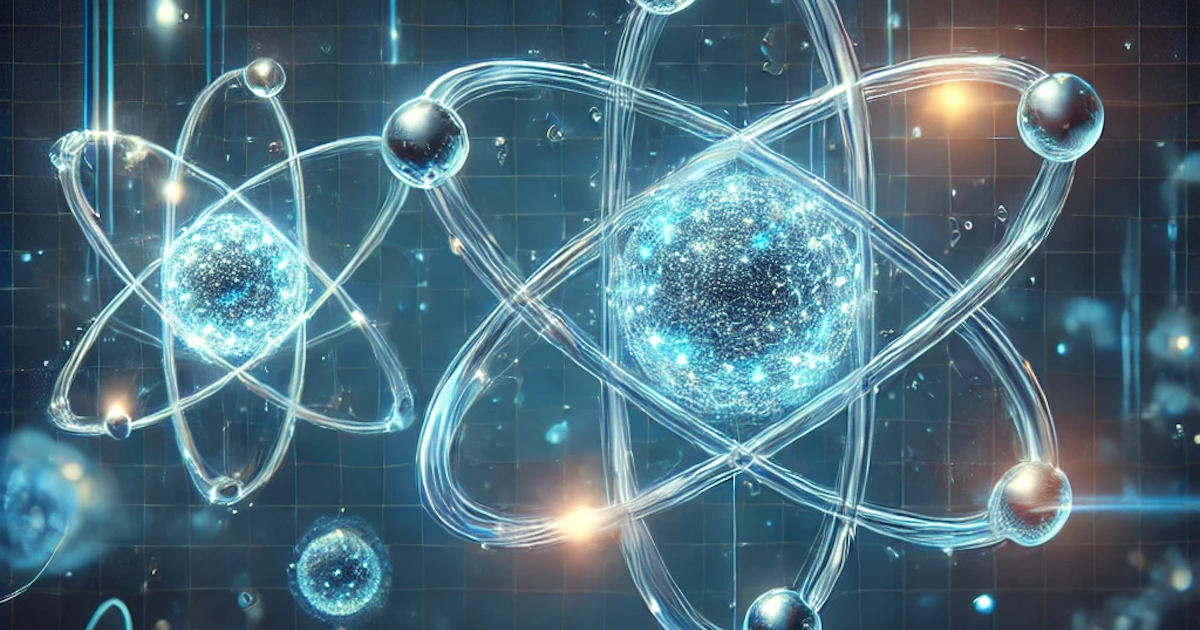Subatomic Particles and Components of Atoms
Briefly examine elementary particles important in nuclear engineering such as electrons, protons, neutrons, photons, and neutrinos, and explore the structure of atoms and atomic nuclei.
Subatomic Particles
Subatomic particles refer to particles smaller than atoms. Subatomic particles include composite particles made up of smaller constituent particles, as well as elementary particles that are considered indivisible. Nuclear engineering particularly focuses on the following elementary particles:
- Hadrons
- Baryons
- Nucleons
- Protons
- Neutrons
- Nucleons
- Baryons
- Leptons
- Electrons
- Positrons
- Neutrinos
The name ‘lepton’ is derived from the Greek word ‘λεπτός’, meaning small and thin. At the time of naming, they were called this because they had smaller masses compared to other types of elementary particles. However, the tauon discovered in the 11970s of the Holocene calendar has a mass nearly 1.9 times that of protons and neutrons despite being a lepton, so leptons are not necessarily always light.
Electrons & Positrons
- Rest mass: $m_e = 9.10939 \times 10^{-31} \text{kg}$
- Charge: $e = 1.60219 \times 10^{-19} \text{C}$
There are two types of electrons: $e^-$ (negatron) with a negative charge and $e^+$ (positron) with a positive charge. These two differ only in the sign of their charge, while their other properties are identical. Typically, when referring to an electron without further specification, it means the negatron.
Under certain conditions, when a positron and a negatron collide, these two electrons annihilate and emit two photons. This process is called electron annihilation, and the photons produced are called annihilation radiation.
Image source
- Authors: Dirk Hünniger, Joel Holdsworth
- License: GFDLv1.2
Protons
- Rest mass: $m_p = 1.6726 \times 10^{-27} \text{kg}$
- Charge: + $e = 1.60219 \times 10^{-19} \text{C}$
They carry a positive charge of the same magnitude as an electron.
Neutrons
- Rest mass: $m_n = 1.674929 \times 10^{-27} \text{kg}$
- Charge: $0$
They have a slightly larger mass than protons and are electrically neutral. Outside the atomic nucleus, they are unstable and decay into protons by emitting an electron and an electron antineutrino, a process that takes about 12 minutes on average.
Neutrinos
- Rest mass: Very small (exact value unknown)
- Charge: $0$
Originally thought to have zero rest mass, it was discovered in 11998 by the Japanese Super-Kamiokande research team that they have a very small but non-zero mass. There are several types, but in nuclear reactions, the electron neutrino and electron anti-neutrino are particularly important, and they are often considered as one type without distinction.
Structure of Atoms and Atomic Nuclei
\[^A_Z X \ (\text{A: Mass number, Z: Atomic number, X: Element symbol})\]- Atoms consist of an electron cloud and a centrally located atomic nucleus
- A neutral, non-ionized atom has the same number of electrons orbiting the nucleus as protons
- Electrons determine the chemical properties and type of element
- The atomic nucleus is composed of nucleons (protons and neutrons), which are bound together by the strong nuclear force that overcomes electrical repulsion
- Atomic number: The number of protons in the atomic nucleus, denoted by $Z$
- Total charge of the nucleus: +$Ze$
- Neutron number: The number of neutrons in the atomic nucleus, denoted by $N$
- Atomic mass number or nucleon number: The sum of the number of protons and neutrons in the nucleus. $A=Z+N.$
- Nuclide: An atomic nucleus with a specific number of protons and neutrons
Isotopes, Isobars, Isotones, and Isomers
| Type | Definition |
|---|---|
| Isotope | Nuclides with the same atomic number but different neutron numbers |
| Isobar | Nuclides with the same mass number but different numbers of protons and neutrons |
| Isotone | Nuclides with the same neutron number but different atomic numbers |
| Isomer | The same nuclide but in a metastable state due to the excitation of one or more nucleons |
